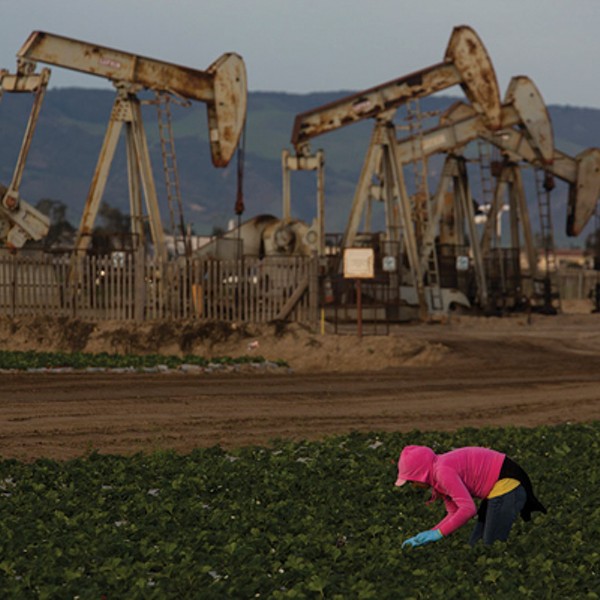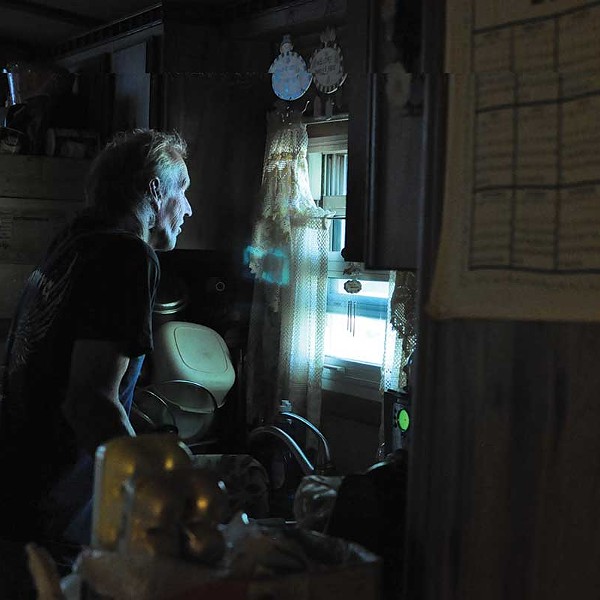“This is the rhythm that we’ve gotten into in this country: A reporter, a muckraker, or a filmmaker goes in and bunks. Then the industry debunks. Then the regulators come in and say, ‘We did our part.’ Meanwhile, there are all these people who are suffering, and they have nowhere to turn and no one to trust. Is this just a matter of, are we expecting too much that sucking something out of the earth is going to be a harmless process?”
on the June 21 “Daily Show”
The US has proven natural gas reserves of 20 trillion cubic feet, placing it seventh on the world list behind Russia, Iran, Qatar, Turkmenistan, and Saudi Arabia. In 2009, for the first time in 10 years, the US extracted more gas than Russia. This was due to a recent drilling boom in the US of previously inaccessible rock formations. The method used to get at the hard-to-reach gas is hydraulic fracturing.
Here’s how hydraulic fracturing, also known as fracking, works: A horizontal well is drilled into a gas-bearing rock formation. The wells are usually quite deep, and can be as far as 10,000 feet below the surface. Once drilled, millions of gallons of water, sand, and chemicals are injected, under high pressure, into the well. The pressure fractures the rock and props open fissures that enable natural gas to flow more freely out of the well.
Fracking is especially good at getting gas out of “tight” rocks like shale. One such shale formation that has begun to be drilled in this manner is the Marcellus Shale, which stretches deep underground from Ohio and West Virginia into Pennsylvania and south-central New York. Energy companies have referred to the Marcellus Shale, estimated to contain between 200 and 500 trillion cubic feet of natural gas, as a “Saudi Arabia of natural gas.” Texas oil- and gas-millionaire T. Boone Pickens has suggested using this new surfeit of energy to help wean the US off foreign oil, turning it into vehicle fuel. (Natural gas currently supplies the US with 20 percent of its electricity needs. Viewed as a “clean” alternative to coal—coal provides 50 percent of US electricity—natural gas is expected to supplant coal as the majority electricity supplier in the US by 2034.)
Not only is the Marcellus Shale (in addition to other shale deposits across the US) seen as a possible answer to our dependence on foreign oil, in rural communities, it’s seen as economic salvation. Proponents of drilling in New York claim that Pennsylvania, where hydraulic fracturing in the Marcellus Shale is underway, has created over 40,000 jobs and had a positive economic impact of almost $2 billion. Many upstate landowners and farmers see drilling as a heaven-sent way for them to be able to afford to stay on their land in an increasing difficult economic climate.
The environmental problems associated with fracking, however, have led critics of the procedure to wage a campaign which has stalled approval of drilling in New York. State legislators are currently considering two bills that would enshrine the de facto moratorium on fracking in law. The first bill would delay fracking for at least a year, and the other would predicate any approval be based upon the release of a study by the Environmental Protection Agency into how natural gas drilling processes affect drinking water supplies. At year’s end, the New York State Department of Environmental Conservation is expected to release its own set of guidelines on gas drilling.
Natural gas drilling isn’t new in New York; there are 13,000 active wells in the state. Critics claim, however, that fracking is fundamentally different from regular gas drilling. The intensive fracking process requires millions of gallons of water, and uses a proprietary mixture of chemicals that contain many known volatile organic compounds. A study by ProPublica has documented more than 1,000 cases of groundwater contamination from fracking.
Part of the reason that fracking exists at all dates back to 2005, when Vice-President Dick Cheney crafted the Halliburton Loophole, which was then inserted with little fanfare into that year’s energy bill. The Halliburton Loophole authorizes oil and gas drillers, exclusively, to inject known hazardous materials directly into, or adjacent to, underground drinking water supplies, bypassing the regulations required by the Clean Water Act, the Clean Water Drinking Act, the Clean Air Act, and the Superfund.

















